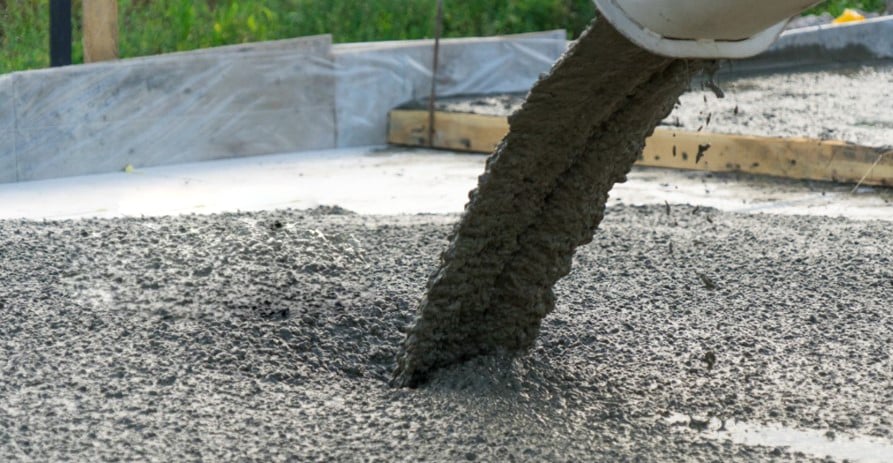Factors Affecting Concrete Negatively in 8 Items

Concrete, cement paste and dispersed aggregate phase and the interface formed by the contact surface of these two phases.
It is a composite material. As such, concrete stands out as the most popular building material that was discovered in the last century and is the most widely used. It is known that 90% of the building production in the world and in Turkey is carried out as a reinforced concrete carrier system. In this case, the importance of examining and interpreting data on reinforced concrete and building materials increases.
Concrete, which is used in different types of structures, encounters many chemical and physical factors that can cause wear throughout its service life. Substances such as water, carbon dioxide, oxygen, sulfate, acid and chlorine leaking into the concrete cause different types of chemical events to take place in the concrete.
Harmful chemical reactions that occur in concrete manifest themselves in the form of increased porosity and permeability of the concrete, cracks, spills, capping, and softening of the concrete, losing its strength and rigidity. With this type of damage to the concrete and the increase in the degree of this damage, the deterioration process accelerates. At this point, the most important chemical effects encountered in concrete occur as a result of sulfate, acid and alkali attacks. Apart from these factors, waste water and salt effects also create significant problems on concrete.
We have made a brief analysis of the factors that adversely affect concrete for you. At this point, we have summarized the 8-item conditions that adversely affect the concrete. Let's examine these 8 items in detail under headings.
1- Leaking Water Effect
Although the water required for the consistency and reaction of the concrete is effective until the concrete gains its strength, it damages the concrete by physical and chemical effects outside of this period. In particular, leaking water can damage the concrete by the effect of frost or evaporation, depending on the reinforcement and weather conditions.
2- Carbon Dioxide Effect
It is accepted that the reaction of carbon dioxide with the microstructure of the concrete, which has gained strength, traditionally causes carbonation, and as a result, a durability problem will occur due to corrosion, that is, decomposition, which occurs in the reinforcements in the concrete.
3- Oxygen Effect
Oxygen combines easily with most other elements. When this unification happens, we say it has been "oxidation-oxidation". The fact that oxidation is very fast, extremely fast is “firing-spoiling”. In almost all oxidation cases, heat is given off. Therefore, the temperature rises, exacerbation occurs. Corrosion of reinforcing bars is extremely slow due to lack of water when the concrete is dry, and because of the lack of oxygen when the concrete is fully saturated with water. The most intense rusting is seen in concrete that gets wet and dry periodically. Some of the concrete that is open to the air is found to be dry. In this case, the reinforcing bars in the concrete are in a passive state. Corrosion in the water environment arises from the difficulty of transporting the dissolved oxygen in the water to the iron surface by percolating through the concrete.
4- Sulfate Effect
Sulphate ions, which are harmful to concrete, are found in groundwater and sea water in clayey soil. These ions attack the calcium hydroxide (CH) in the hardened concrete and form ettringite. The ettringite formed in the stable structure of the hardened concrete causes harmful expansion and crack formation in the concrete.
5- Acid Effect
Acids in the water leaking into the hardened concrete cause chemical events that cause the concrete to expand and become damaged. The corrosive effect of acids on concrete is called acid attack.
6- Chlorine Effect
Especially in underwater structures such as bridge piers, chlorine ions in the environment cause corrosion of iron reinforcement by penetrating into the concrete. This effect is also valid in environments where concrete is used and humidity is high.
7- Wastewater Impact
There are many biological and chemical substances in wastewater. The corrosion effect of hydrogen sulfide, especially in sewage systems, is very high. In addition, many microbiological substances directly contact the concrete, affect the strength of the concrete and cause wear.
8- Salt Effect
Salt indirectly damages concrete driveways, patios and sidewalks. Bumps and pits do not occur due to direct exposure to salt. Salt, which causes corrosion on the surface over time, causes damage to the concrete and causes color loss, cracking and crumbling in the concrete.
3671 Reads
